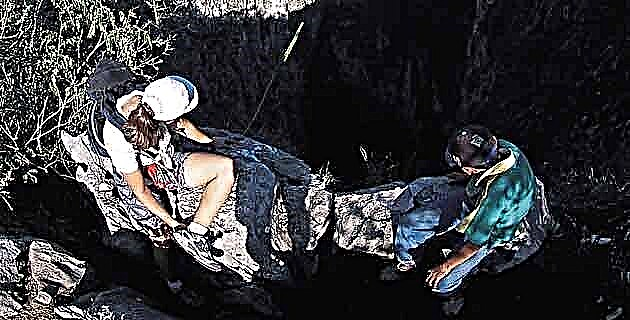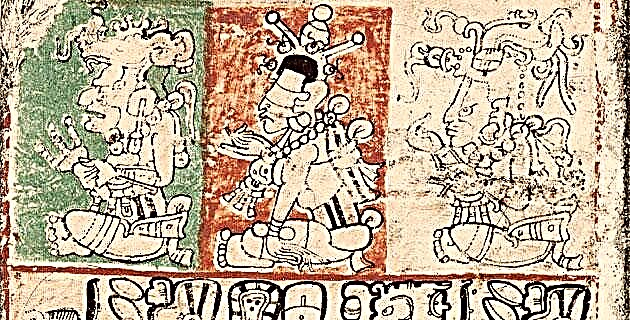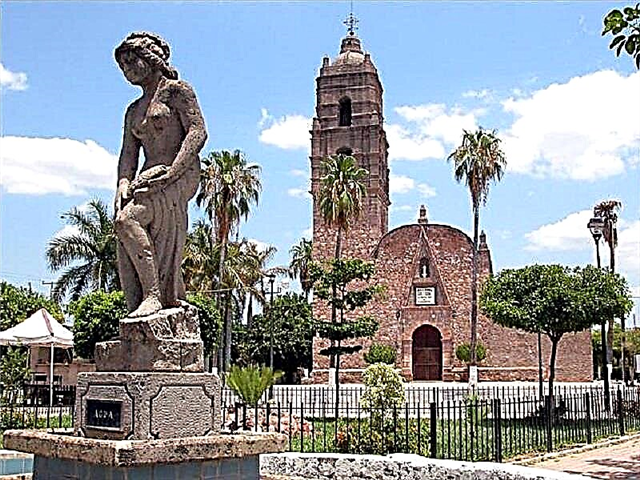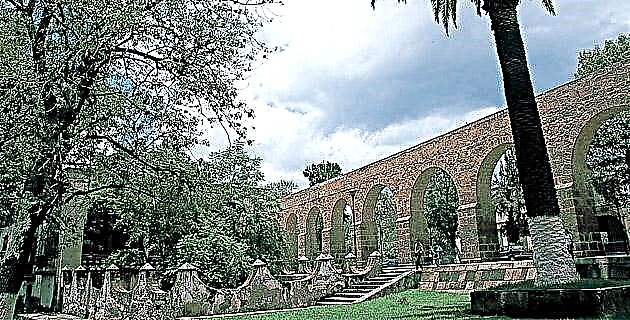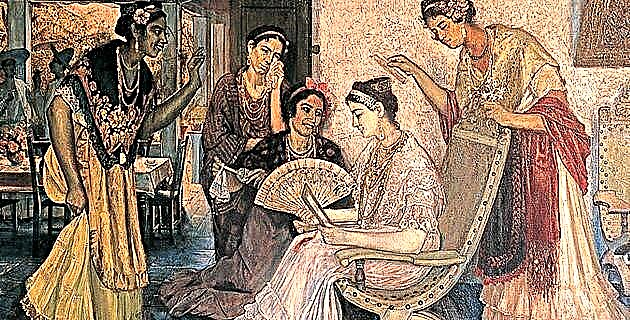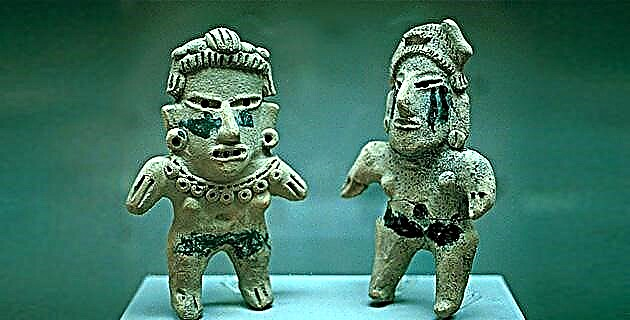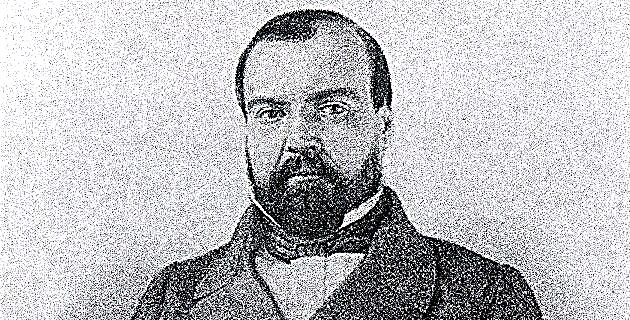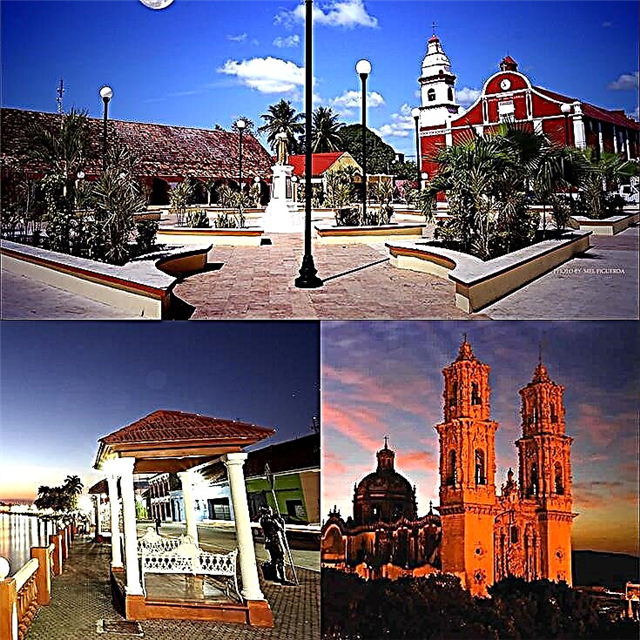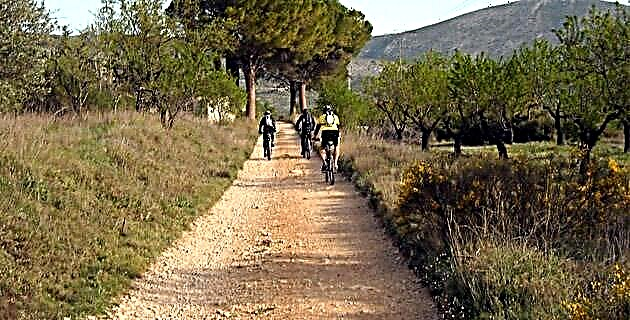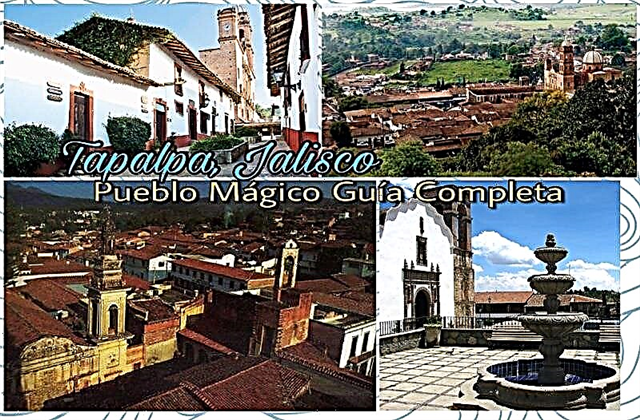In the foothills of its mountains, the Magic Town de Tapalpa welcomes tourists with its natural and architectural beauties and the friendliness of the people from Tapalpa.
1. Where is Tapalpa?

Tapalpa is a Jalisco town belonging to the municipality of the same name, located in the central sector of the state of Guadalajara. Its rural atmosphere, architectural beauties, historical places and natural landscapes have made it one of the favorite destinations for tourists in Guadalajara and the western part of the country, since Tapalpa is only 132 km away. from the capital of the state of Jalisco. Tapalpa was incorporated into the Mexican system of Pueblos Mágicos to enhance the tourist use of its many charms.
2. How did the town arise?
During pre-Hispanic times, Tapalpa was part of the dominion of Tzaollan, which was ruled by Cuantoma. He fought against other lordships in the area until they were overwhelmed by that of Colima. When the Spanish arrived, the conqueror Alonso de Ávalos deceived Cuantoma into believing that he would free him from the dominion of Colima, and in effect he did, but to subject Tapalpa to the viceroyalty. Shortly after Avalos the evangelizers arrived, to complete the work of submission. The first council of Tapalpa met in 1844 and the town reached the rank of town in 1878.
3. What are the main distances and routes to Tapalpa?

To go from Guadalajara to Tapalpa you have to travel 132 km. heading south on the highway towards the city of Colima; the capital of the state of Colima is 146 km away. of the Magic Town. Tepic is located 325 km. from Tapalpa, the city of Guanajuato at 404 km. In the direction of León and Guadalajara, and Morelia is 420 km away. The city of Zacatecas is 470 km away. from Tapalpa, traveling south towards Aguascalientes and Guadalajara; while the hydro-warm capital is located 353 km. of Tapalpa. To go from Mexico City to the Magic Town you have to travel 683 km. heading west through Mexico 15D.
4. What weather awaits me in Tapalpa?

Its altitude of 2,067 meters above sea level gives Tapalpa a cool climate throughout the year. The annual average temperature is 16 ° C and in the warmer months, from May to September, the thermometer always averages below 19 ° C. There may be occasional hot flashes, but almost never above 27 ° C. In the cooler months, from December to February, the average temperature drops to the range of 12 to 14 ° C, although colds close to 5 ° C can occur. runs from June to October. Rainfall is very scarce between November and April.
5. What are the most outstanding attractions of the Pueblo Mágico?

Tapalpa combines architectural attractions with landscapes and parks for the practice of ecological tourism in places of incomparable beauty. A basic tour of Tapalpa must include its historic center, with its typical houses and temples, as well as some testimonies of industrial archeology, such as the ruins of the Paper Factory and the Fundidora, located in communities very close to the town. For the delight of the senses and the enjoyment of outdoor entertainments, you have the Salto and the Nogal Dam, the Hacienda La Media Luna, Las Piedrotas, the Ekopark, and the Los Frailes Natural Park. The rich gastronomy of Tapalpa, as well as its varied crafts complete the picture for the full enjoyment of visitors.
6. What is the historic center of Tapalpa like?
Tapalpa is a town of cozy cobbled streets that causes you to walk relaxed while appreciating its large houses with wooden canopies and balconies, and the two main temples, the old and the new, stopping at one of the small establishments to admire the crafts and taste some typical delicacy. On one side of the square is the Municipal Market, with all the color and variety that these Mexican spaces offer and a little further on you will find the House of Culture and the Sculpture Garden, where works by the artists Sebastián are exhibited. and Alejandro Colunga.
7. What's in the San Antonio Temple?
In front of the Main Square of Tapalpa is the old church of San Antonio de Padua, the oldest in the town, located next to the parish temple of Our Lady of Guadalupe. It was built in the 17th century by the Franciscan friars who evangelized the region and as an interesting detail, it preserves its original mesquite floor. It also has a small museum of sacred art in which some pieces used in Christian worship for about 4 centuries are exhibited. On one side of the temple there is a historical and religious mural, the work of the artist José Manuel Caballero y Bernal.
8. What is the interest of the Temple of Our Lady of Guadalupe?
There are priests who stay almost their entire lives in a parish, becoming spiritual references and citizens of the town. Father Cipriano González officiated in Tapalpa for more than 44 years and had to face the severe physical deterioration of the church of San Antonio. Under the priest's leadership, the town organized to build a new temple and the foundation stone was laid in 1950. Every week, the humblest parishioners donated 20 cents; cattle and other animals were raffled; others contributed their workforce. The temple of Our Lady of Guadalupe was completed in 1970 and one of its peculiarities is that it is made entirely of brick, without cladding.
9. What's at Hacienda La Media Luna?
This hacienda is a place that offers the particular charm of its desolation and its history as the scene of inspiration for Juan Rulfo, the most important and original novelist of Mexican literature. The old farm of La Media Luna is located about 10 minutes from Tapalpa, in the community of Lagunillas and it is said that Rulfo imagined himself Pedro Paramo riding through their estates and doing other things in the famous literary work. In front of the hacienda there is a lagoon where you can practice sport fishing and maybe you will be lucky and catch a tilapia or bass.
10. Where is Salto del Nogal?
It is the largest waterfall in the state of Jalisco, with a height of 105 meters. To this beautiful waterfall located about 10 km. from the Magic Town, it is reached after a beautiful and invigorating walk of about 40 minutes, among bromeliads, paxtles and other species of the flora of the mountains. In the jump and its fantastic surroundings you can practice various mountain entertainment, such as rappelling, cycling, hiking and fishing, as well as horseback riding. On the way to Salto del Nogal is the smaller Molino waterfall.
11. What can I do at the Ekopark?

It is an ecological development for the practice of adventure sports located less than 10 km. The most exciting thing about the park are its zip lines, 9 in total, of different lengths, the longest being about 300 meters. The descent lines reach more than 25 meters above the treetops of the Sierra de Tapalpa and you can reach a speed of 50 kilometers per hour. The walk to get to the exit points of the zip lines runs between the beauty of the mountain landscape. You can also rappel, climb, hike and cycle, as well as drive ATVs and camp.
12. What are Las Piedrotas?
This beautiful and mysterious sector is also called the Valley of the Enigmas, because of the curious and enormous rock formations that are in the place and that it is not known how they got there. Las Piedrotas are surrounded by enchanting natural spaces and from its location there are spectacular views of the confines of the valley. One version indicates that they were meteorites that fell millions of years ago and another that they are formations that emerged from the earth and have been sculpted by the erosion of air and water. Las Piedrotas have become popular among enthusiasts of the extraordinary powers of nature, for their supposed condition as a center for the generation of positive energies.
13. What's in the Paper Mill?
On the way to Chiquilistlán and Las Piedrotas, 2 km. from the town of Tapalpa, is this abandoned paper factory that was the first to enter into operation in Latin America. It was built in 1840 by English investors, who built an industrial building in stone and red brick, whose vestiges stand out among the vegetation. The La Conquista paper mill was in operation until 1923, when it closed in the middle of the turbulent final years of the Mexican Revolution.
14. What is Los Frailes Natural Park like?
Another place of natural interest that is worth visiting in Tapalpa is this park, located about 9 km. north of town. The rock formations that give the site its name resemble monks in an attitude of recollection, as if they were praying and are located on the highest hill near Tapalpa, which is why they also constitute a natural viewpoint with excellent panoramic views to take photographs and delight in the scenery. In the park you can perform various outdoor entertainment activities, such as climbing, rappelling, hiking and driving ATVs.
15. What is the interest of the Ironworks Fundidora?
Some of the bells that still ring in Tapalpa and other nearby towns, as well as various fountains and bronze pieces that adorn streets and houses, were manufactured in the foundry that operated in the community of Ferrería de Tula. Several kilometers of railways used by Mexican railways between the late 19th and early 20th centuries also left this smelting plant. The foundry of Ferrería operated between 1873 and early 1900 and today its ruins are preserved, which are distinguished by the green foliage.
16. What can I do in the Presa del Nogal?

Taking the road to San Gabriel, about 8 km. from Tapalpa, is this body of water, whose access road runs between the scent of lavender and the beauty of wild flowers that offer the walker their yellow and white tones. The dam is frequented by sport fishing enthusiasts, who rarely finish the day without catching a carp, trout, largemouth bass or tilapia. Nearby there are some accommodations, a golf club and at the dam you can go boating and swimming in open water.
17. What other attractions are there in the vicinity of Tapalpa?
3 km. from Tapalpa is the picturesque community of Atacco, which was the place where the Franciscan friars began the evangelization of this area of Jalisco. On the initiative of the Franciscans, the Hospital de Indios was built, which is still preserved, in which the natives received care to the extent that the Medicine of that time allowed. Atacco, which means "Place where water is born" in the indigenous language, is reached through a dirt road and has a simple spa whose waters are provided by the springs that explain the Indian name of the town.
18. Are there any other places of interest nearby?
160 km. To the northeast of Tapalpa is the town of Juanacatlán, where there is a spring called Agua Escondida, where in the past they used to wash the costumes dressed by the Virgen de la Defensa. Juanacatlán is a town of old legends, which the residents gladly refer to to tourists, such as "El Charco Verde", "Las Campanas del Cerro" and "At 12 o'clock on the Bridge". San Francisquito is a community from which there is a splendid view of Tapalpa and the beautiful surrounding landscape.
19. What is the local crafts like?
The artisans of Tapalpa practice a wide range of activities ranging from textiles to pottery, through saddlery, furniture and the curious ocochal. The art of the ocochal is worked with the needles of the pines known as chino and teocote, which are converted into bread baskets, tortilla boxes, fruit bowls, piggy banks, jewelry boxes and other delicate handicrafts of striking brown color. On old artisan looms, they make joggers, blankets, backpacks and other unicolored or multi-colored pieces. They also work with flower painting on recycled paper, wood carvings, manufacture of colonial furniture, saddles and huaraches.
20. What are the most outstanding dishes of Tapalpa gastronomy?
They say in Mexico that the best lamb al pastor is eaten in Tapalpa. It must be that the oranges used to marinate the meat and the oak wood used in the cooking impart a special flavor to it, which is not achieved with ingredients from other places. Chard tamales and enchiladas are other typical dishes that the people of Tapalpe eat lively in the simple outlets of the town. At dessert time, they turn to peach pegoste, the sweet that symbolizes Tapalpa. To drink, they have eggnog, pomegranate punch and pulque.
21. When are the main festivals of the Pueblo Mágico?
The festivities of the Virgin of Guadalupe are celebrated between January 4 and 13, with religious processions, fireworks, music and typical dances. Every year, the Virgin of Defense makes a pilgrimage from Juanacatlán to Tapalpa, a tradition that is already more than 150 years old. The Virgin arrives on the first Saturday in July and the festival is celebrated until the first Saturday in September, when the image returns to its original temple. Another emotional festival that takes place in Tapalpa is the Pilgrimage of the Absent Children, which takes place on the Sunday closest to January 12. The festivities in honor of San Antonio de Padua are from July 11 to 13.
22. Where do you recommend I stay?
Hotel La Casona, located in Capulín 54, Barrio del Salto, is a rustic and very well decorated accommodation, with a rich breakfast and excellent service. San Bernardo Hotel & Spa is a mountain establishment located at km. 4.5 of the highway to Chiquilistlan and has comfortable rooms with fireplace and a beautiful lake. Hostal Casona de Manzano operates in a beautiful colonial house, at Francisco Madero 84, is run by its own owner and has an interior patio full of plants. Other good options to settle comfortably in Tapalpa are Hotel Tapalpa Country Club, Monterra Tapalpa and Tapalpa de mis Amores.
23. What are the best restaurants?
The Madre Tierra restaurant receives the highest praise for its delicious food and excellent coffee; It is located in front of the Main Square. El Vergel, at km. 2.6 from the highway to San Gabriel, heading to the Nogal dam, is a country house, located in the middle of a cozy grove, and on its menu it offers Mexican dishes with the chef's touches, such as confit duck tacos and the sheep to the shepherd. La Mezcalera, at km. 2.5 from the road to Atemajac de Brizuela, has on its menu lamb al pastor, quail, moronga, delicious beans and freshly made tortillas by hand. You can also have a good time at Paulinas, Los Girasoles and El Árbol de la Culebra.
We hope that this complete guide to Tapalpa encourages you to go to know the Magical Town of Jalisco and that you can tell us the impressions of your trip in a short note. See you soon again.

